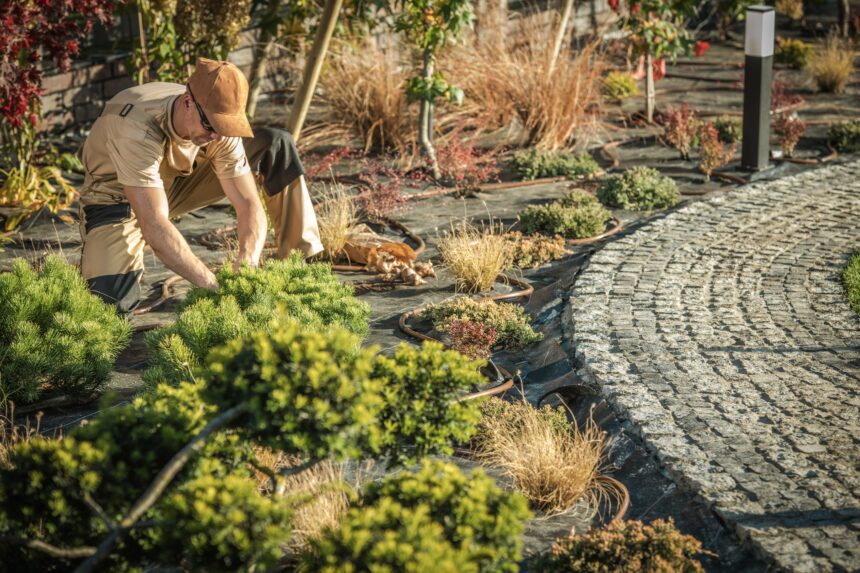Creating a beautiful and functional landscape involves more than just planting flowers and trees. The materials you choose play a crucial role in defining the aesthetics, durability, and maintenance requirements of your outdoor space. Whether you’re embarking on a small garden makeover or a large-scale landscaping project, selecting the right materials is essential for achieving your desired results. Here are some tips to help you choose the best landscaping materials for your project.
Understand Your Landscape Needs
Before you start selecting materials, it’s important to have a clear understanding of your landscape needs and goals. Consider the following questions:
- What is the purpose of your landscape? Are you creating a space for relaxation, entertainment, or gardening?
- What is your budget? Determine how much you are willing to spend on materials.
- What is the climate like in your area? Choose materials that can withstand local weather conditions.
- How much maintenance are you willing to do? Some materials require more upkeep than others.
Types of Landscaping Materials
1. Soil and Mulch
Soil and mulch are fundamental to any landscaping project. Good-quality soil provides the necessary nutrients for plant growth, while mulch helps retain moisture, suppress weeds, and improve soil health.
- Topsoil: Use high-quality topsoil for planting beds and gardens.
- Mulch: Organic mulches like wood chips and bark decompose over time, adding nutrients to the soil. Inorganic mulches like gravel and pebbles offer a clean, modern look and require less maintenance.
2. Paving Materials
Paving materials are used for pathways, patios, and driveways. They should be durable, slip-resistant, and complement the overall design of your landscape.
- Concrete: Versatile and durable, concrete can be stamped or stained to mimic other materials.
- Natural Stone: Offers a timeless, elegant look but can be expensive.
- Brick: Classic and durable, brick is great for traditional landscapes.
- Gravel: Affordable and easy to install, gravel works well for informal paths and driveways.
3. Edging Materials
Edging materials define the boundaries of planting beds, paths, and lawns. They help keep different elements of your landscape separate and tidy.
- Metal Edging: Durable and sleek, metal edging is ideal for modern landscapes.
- Plastic Edging: Affordable and easy to install, but less durable than other options.
- Stone or Brick Edging: Provides a natural look and is long-lasting.
4. Water Features
Water features like fountains, ponds, and waterfalls add a soothing element to your landscape. The materials you choose should be waterproof and blend well with the surrounding environment.
- Concrete or Stone: Commonly used for durable and natural-looking water features.
- Fiberglass: Lightweight and easy to install, but less durable.
5. Plants and Ground Cover
The plants and ground cover you choose can significantly impact the appearance and maintenance needs of your landscape.
- Grass: Traditional lawns require regular mowing and watering. For a low-maintenance option, consider artificial turf.
- Ground Cover Plants: Use ground cover plants like clover or creeping thyme to reduce maintenance and add texture.
Tips for Selecting the Right Materials
1. Consider Aesthetics
Choose materials that complement the style of your home and existing landscape. For example, sleek metal edging might look out of place in a rustic garden but would be perfect for a contemporary design.
2. Think About Durability
Select materials that can withstand the elements and wear and tear. For high-traffic areas, opt for durable options like concrete or natural stone.
3. Factor in Maintenance
Be realistic about the amount of maintenance you’re willing to do. Some materials, like natural stone, require regular sealing, while others, like gravel, are virtually maintenance-free.
4. Budget Wisely
Set a budget and stick to it. While it’s tempting to splurge on high-end materials, there are plenty of affordable options that still offer great quality and aesthetics.
5. Consult a Professional
If you’re unsure about which materials to choose, consider consulting a landscape designer or contractor. They can provide valuable insights and help you make informed decisions.
For those seeking a low-maintenance and durable option for their lawns, artificial turf is an excellent choice. Click here for top-notch artificial turf installation Los Angeles services from Turftopia.
Conclusion
Choosing the right landscaping materials is crucial for creating a beautiful, functional, and sustainable outdoor space. By understanding your needs, considering aesthetics, durability, maintenance, and budget, and consulting professionals when necessary, you can select materials that will enhance your landscape and provide enjoyment for years to come.




